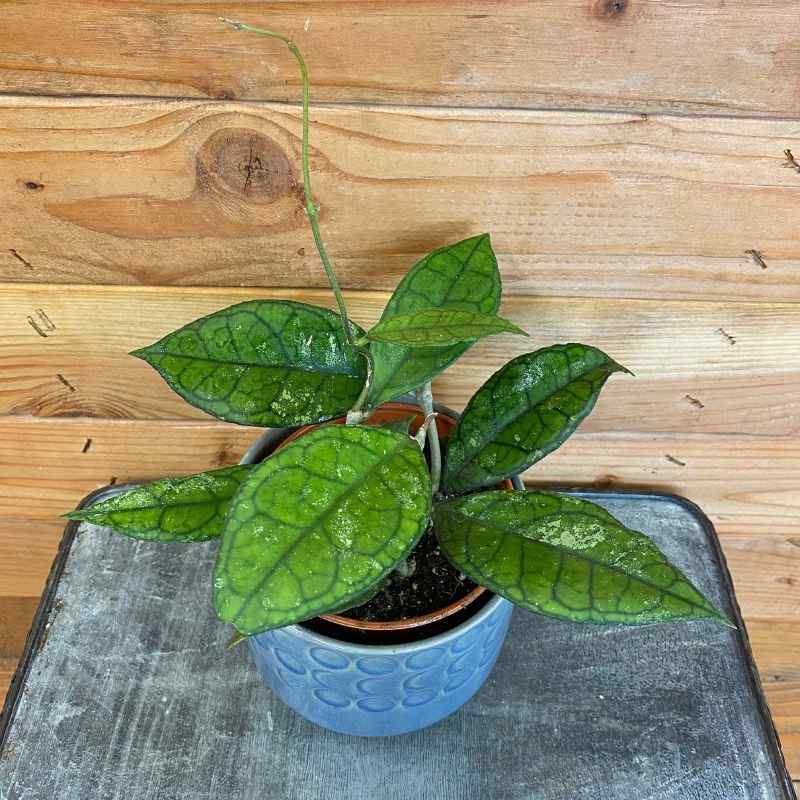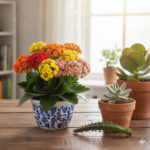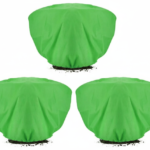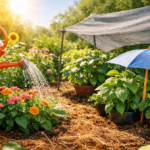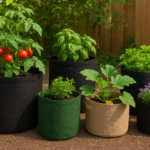Hoya Finlaysonii is a popular and unique houseplant known for its trailing vines and gorgeous, star-shaped blooms. With its distinctive succulent leaves and easy-care nature, hoya finlaysonii is an excellent choice for both beginner and experienced plant lovers.
Whether grown in a hanging basket or draped over a shelf, this stunning plant adds a touch of natural beauty to any indoor space. Its tolerance for low light conditions makes it ideal for rooms with limited sunlight, while its resilience to drought ensures it is forgiving even if you forget to water it occasionally.
With the right care and attention, hoya finlaysonii can thrive and continue to beautify your home for years to come.
What is Hoya finlaysonii?
Hoya finlaysonii, commonly known as the Wax Plant or the Porcelain Flower, is a mesmerizing evergreen vine native to Southeast Asia. Belonging to the Apocynaceae family, Hoya finlaysonii is a part of the larger genus Hoya, which includes over 200 species of tropical and subtropical flowering plants. With its attractive foliage, unique flowers, and ease of care, Hoya finlaysonii has gained immense popularity among plant enthusiasts worldwide.
Features of Hoya finlaysonii
Leaves
This evergreen vine features long, glossy, and fleshy leaves that are typically heart-shaped. The leaves have an attractive deep green color, and some varieties may even showcase a mesmerizing splash of silver or white variegation.
Stems
The stems of Hoya finlaysonii are robust and flexible, allowing them to trail or climb when provided with support. They may grow several feet in length, showcasing the vine’s adaptability to different growth conditions.
Hoya Finlaysonii Flowers

The most captivating aspect of hoya finlaysonii is its clusters of delicate and waxy flowers. These star-shaped blooms come in various colors, including pink, white, and reddish shades. The flowers exude a pleasant fragrance that fills the air, making it a delightful addition to any indoor garden.
Growth Habit and Size
Hoya finlaysonii is a vining plant that naturally climbs and trails, making it a perfect choice for hanging baskets or trellises.
The vines of this species can grow up to several feet in length, creating a cascading effect when planted in elevated positions.
The growth habit of the hoya finlaysonii is generally bushy, with multiple stems branching out from the base of the plant.
With proper care and support, these vines can be trained to climb structures, adding a touch of botanical charm to walls or shelves.
Hoya Finlaysonii Care
To ensure the health and vitality of this beautiful plant, proper care is essential. Whether you’re a seasoned plant enthusiast or a beginner in the world of gardening, here’s a comprehensive guide on how to care for Hoya finlaysonii.
Light Requirements
Hoya Finlaysonii thrives in bright, indirect light. Place the plant near a window with filtered sunlight, ensuring it receives bright but gentle illumination. Avoid exposing it to direct sunlight, especially during the hot afternoon hours, as this may lead to leaf scorch. East or west-facing windows are usually ideal, as they provide sufficient light without subjecting the plant to harsh rays.
Soil and Potting Mix
A well-draining potting mix is essential for Hoya finlaysonii’s health. The plant prefers a loose and airy growing medium that allows excess water to drain away quickly. A recommended potting mix for Hoya Finlaysonii consists of a blend of peat moss, perlite, and orchid bark. This combination provides the perfect balance of aeration and moisture retention, preventing the plant’s roots from sitting in stagnant water.
Watering and Humidity Needs
Hoya finlaysonii enjoys regular watering during the growing season, which typically spans from spring to early autumn. However, it’s crucial to avoid overwatering, as the plant prefers to dry out slightly between waterings. Allow the top inch or two of the soil to dry before watering again. In winter, during the plant’s dormant period, reduce the watering frequency to prevent root rot.
As a tropical plant, Hoya Finlaysonii appreciates a humid environment. Aim to maintain a moderate to high humidity level, ideally around 50% or more. Misting the foliage or using a humidifier can help achieve the desired humidity, especially in drier indoor conditions.
Temperature Tolerances
Hoya Finlaysonii thrives in warm temperatures typical of its native tropical and subtropical habitats. It can withstand temperatures between 18°C to 30°C (64°F to 86°F). Avoid exposing the plant to cold drafts or sudden temperature fluctuations, as this can lead to stress and damage.
Fertilization
During the active growing season in spring and summer, Hoya Finlaysonii benefits from regular fertilization. Apply a balanced, water-soluble fertilizer formulated for houseplants once every two to four weeks. Be cautious not to over-fertilize, as excessive nutrients can harm the plant and lead to excessive foliage growth at the expense of flowering.
Pruning and Training
Pruning is an essential aspect of Hoya finlaysonii care to maintain its shape and encourage new growth. Regularly remove any dead or yellowing leaves and spent flowers to promote the development of new buds. Pinching back the tips of the vines can also encourage branching, creating a fuller and more bushy plant. Furthermore, the vining stems can be trained to climb trellises or other supports, enhancing the plant’s visual appeal and preventing it from becoming tangled.
Repotting
Hoya finlaysonii generally prefers to be slightly root-bound, so repotting should be done only when necessary. Signs that the plant requires repotting include roots growing out of the drainage holes, water draining too quickly, or the plant becoming top-heavy. When repotting, choose a pot that is only slightly larger than the current one and ensure it has drainage holes to prevent waterlogging.
Propagation Techniques For Hoya Finlaysonii
Propagating Hoya Finlaysonni can be an exciting way to expand your plant collection or share the beauty of these unique plants with others.
There are a few methods you can use to propagate Hoya Finlaysonnii.
Stem Cutting Propagation
- Select a healthy stem from the parent plant that has at least two to three nodes (points where leaves emerge).
- Using clean and sharp pruners or scissors, make a clean cut just below a node leaving one or two leaves at the top.
- If desired, you can apply a rooting hormone to the cut end to promote root development (optional).
- Place the cutting in a container filled with a well-draining propagation mix, such as a combination of peat moss and perlite.
- Keep the soil consistently moist but not waterlogged and provide bright, indirect light.
- After a few weeks, you should start to see new roots forming.
- Once the roots are well-developed, you can transfer the cutting to a small pot with regular potting soil.
Water Propagation
- Select a healthy stem cutting, as described in the previous method.
- Fill a glass or jar with water and place the stem cutting in the water, ensuring that at least one or two nodes are submerged.
- Place the container in a location with bright, indirect light.
- Change the water every few days to prevent stagnation and the growth of harmful bacteria.
- Over time, you should see roots forming from the submerged nodes.
- Once the roots are well-established, you can transfer the cutting to a pot with well-draining soil.
Common Leaf Issues in Hoya Finlaysonii
Hoya Finlaysonii, like other plants, can sometimes experience leaf issues that may indicate underlying problems.
Here are some common leaf issues you may encounter with Hoya Finlaysonii
and their potential causes:
Yellowing Leaves
It can occur due to various reasons, including overwatering, underwatering, nutrient deficiencies, or natural aging.
Assess the plant’s watering routine and adjust accordingly, ensuring the soil is neither too dry nor waterlogged.
Consider fertilizing the plant with a balanced fertilizer to provide the necessary nutrients.
If the yellowing is limited to older leaves at the bottom of the plant, it may be a natural process as new leaves emerge.
Brown Spots or Edges
Brown spots or edges on the leaves can be caused by inconsistent watering, underwatering, or low humidity.
Check the soil moisture regularly and water the plant when the top inch (2.5 centimeters) of soil becomes slightly dry.
Increase humidity levels by misting the leaves or using a humidifier.
Avoid using water with high salt content, as it can cause leaf burn.
Leaf Curling
Leaf curling can respond to dry air, low humidity, or inadequate watering.
Increase humidity levels around the plant by misting the leaves or placing a tray of water nearby.
Ensure the plant receives adequate watering, allowing the soil to dry slightly between waterings.
In some cases, curling leaves can also be caused by excessively high temperatures or direct sunlight, so adjust the plant’s placement accordingly.
Leaf Spotting or Discoloration
Leaf spots can occur due to fungal or bacterial infections, as well as pest infestations.
Treat any visible pests with appropriate measures, such as insecticidal soap or natural predators.
For fungal or bacterial issues, consider using a fungicide or adjusting environmental conditions to discourage disease development.
Remove and dispose of severely affected leaves to prevent further spread.
Assess the plant’s conditions and adjust as needed, providing stable and suitable growing conditions.
Pests And Diseases
Hoya Finlasonni is generally a resilient plant, but like any other houseplant, it can be susceptible to certain pests and diseases.
Here are some common pests and diseases that may affect Hoya Finlasonii and how to deal with them:
Pests
Aphids
Aphids are small, soft-bodied insects that can gather new growth, causing curling and distortion. They can be found clustered on new growth, undersides of leaves, or along stems.
Use a strong stream of water to wash off aphids from the plant. Alternatively, you can apply insecticidal soap or neem oil following the product instructions. Repeat treatments may be necessary to entirely eliminate the infestation.
Spider Mites
Spider mites are tiny pests that can cause webbing on the leaves and damage the plant by piercing the cells and sucking out the sap.
Regularly misting the leaves to increase humidity can help deter spider mites. If an infestation occurs, you can use insecticidal soap, neem oil, or horticultural oil following the product instructions. Ensure thorough coverage, targeting the undersides of leaves.
Mealybugs
Mealybugs are small, cotton-like insects that gather in clusters. They can be found on leaf joints, leaf undersides, and along stems. Infested areas may appear white or have a sticky residue.
Remove mealybugs manually using a cotton swab dipped in rubbing alcohol or soapy water. For severe infestations, you can use insecticidal soap or neem oil following the product instructions.
Diseases
Leaf Spot
Leaf spot diseases are fungal or bacterial infections that cause spots or lesions on the leaves. The areas may vary in color, including brown, black, or yellow, and can sometimes have a concentric ring pattern.
Remove and destroy any infected leaves to prevent the spread of the disease. Ensure proper air circulation and avoid over-watering to minimize moisture on the foliage. Applying a fungicide or bactericide following the product instructions can help manage severe cases.
Root Rot
Root rot is caused by overwatering or poorly draining soil, leading to the decay of the plant’s roots. Symptoms include wilting, yellowing leaves, and a foul odor from the soil.
Address root rot by improving drainage conditions. Allow the soil to dry out slightly between waterings and ensure the pot has adequate drainage holes. Trim any affected roots and repot the plant using fresh, well-draining soil.
Leaf Blight
Leaf blight is a fungal disease that causes large brown or black spots on the leaves. Remove affected leaves and ensure proper air circulation and soil drainage. Apply a fungicide if the blight persists.
By staying vigilant and taking prompt action when necessary, you can effectively manage and mitigate pest and disease issues in your beloved Hoya plant, ensuring its continued health and vibrancy.
Hoya Finlaysonii VS Hoya Callistophylla
Hoya Finlaysonii
This species features waxy, lance-shaped leaves with prominent veining and occasional variegation. Its flowers are star-shaped and usually pink or reddish with a white center.
Hoya Callistophylla
Hoya Callistophylla showcases glossy, heart-shaped leaves with distinct silver variegation. Its flowers are clustered and trumpet-shaped, with a pinkish hue.
Growth Habit
It is a trailing or climbing plant, perfect for hanging baskets or trellises.
This species is more compact and bushy, making it suitable for smaller spaces or as a tabletop display.
Flower Color
The flowers are predominantly pink or reddish, adding a splash of vibrant color to the plant.
Its flowers display shades of pink, giving a softer and more delicate appearance.
Care Requirements
Both Hoya Finlaysonii and Hoya Callistophylla share similar care needs, preferring bright, indirect light, well-draining soil, and moderate watering. They thrive in warm, humid environments and can be sensitive to overwatering.
Availability
Both Hoya Finlaysonii and Hoya Callistophylla are sought-after by plant enthusiasts, but Hoya Callistophylla may be relatively harder to find due to its unique and captivating appearance.
Hoya Finlaysonii Varieties
Hoya Finlaysonii, with its waxy leaves and mesmerizing flowers, has captured the hearts of plant enthusiasts worldwide. Over time, various cultivars and varieties of this beautiful species have been developed, each showcasing unique features that add to its allure.
1. Hoya Finlaysonii ‘Variegata’:
This stunning variety is characterized by its striking variegated foliage. The leaves display creamy white or yellow splashes, contrasting beautifully against the deep green background. Hoya Finlaysonii ‘Variegata’ adds an extra layer of visual interest and elegance to any indoor or outdoor space.
2. Hoya Finlaysonii ‘Rosea’:
Hoya Finlaysonii ‘Rosea’ is celebrated for its charming pink flowers. While the typical Hoya Finlaysonii flowers are usually pink or reddish with a white center, ‘Rosea’ exhibits a more pronounced and captivating pink hue. These delicate blooms stand out and add a touch of softness to the overall appearance of the plant.
3. Hoya Finlaysonii ‘Splash’:
This variety is prized for its unique leaf pattern, which features random splashes or speckles of lighter colors, such as cream or white. The irregular and scattered markings create a captivating mosaic effect on the leaves, making Hoya Finlaysonii ‘Splash’ a true standout in any plant collection.
4. Hoya Finlaysonii Nova:
It is an exceptional and sought-after variety within the Hoya Finlaysonii species. Its thick, lance-shaped leaves showcase a stunning mosaic of green and creamy-white or yellow variegation, creating an artistic and captivating display. As a trailing or vining plant, it gracefully adorns hanging baskets or climbs trellises with its elegant stems. The star-shaped flowers, usually pink or reddish with a white center, add a delightful contrast to the mesmerizing foliage.
5. Hoya Finlaysonii ‘Compacta’:
As the name suggests, ‘Hoya Finlaysonii ‘Compacta’ is a more compact and bushy variety compared to its trailing or vining counterparts. It forms a dense and attractive foliage display, making it an excellent choice for smaller spaces or as a tabletop ornament.
6. Hoya Finlaysonii ‘Pink Silver:
This alluring variety combines the charm of pink flowers with the elegance of silver-variegated leaves. The soft pink blooms complement the silvery patterns on the foliage, creating a harmonious and visually stunning plant.
7. Hoya Finlaysonii ‘Tricolor’:
‘Hoya Finlaysonii ‘Tricolor’ is a captivating variety that boasts variegated leaves with a mix of green, pink, and cream colors. The intricate tricolor pattern adds depth and complexity to the plant’s appearance, making it a delightful addition to any collection.
Frequently Asked Questions
1. What is the difference between Hoya Finlaysonii and Callistophylla?
Hoya Finlaysonii and Callistophylla are different species of the Hoya genus. While both belong to the Wax Plant family, they have distinct botanical characteristics, such as leaf shape, flower color, and growth habits.
2. Is Hoya Finlaysonii easy to grow?
Yes, Hoya Finlaysonii is generally considered an easy-to-grow houseplant. It thrives in bright, indirect light and requires well-draining soil. With proper care, it can reward you with beautiful foliage and exquisite flowers.
3. Is Hoya Finlaysonii toxic?
Yes, like many other Hoyas, Hoya Finlaysonii contains compounds that may be toxic if ingested. Keep it out of reach of pets and children to avoid any potential health issues.
Conclusion
To summarize, the Hoya Finlaysonii is an exceptional plant that brings beauty and elegance to any space. Its delicate foliage and mesmerizing blooms make it a popular choice among plant enthusiasts. With its low maintenance requirements and ability to thrive in various environments, it is a perfect addition to both indoor and outdoor settings.
So, if you are looking to add a touch of elegance and charm to your home or office, look no further than the hoya finlaysonii. Get your own hoya finlaysonii today and elevate your space with its enchanting presence.
You may also like Hoya Elliptica

